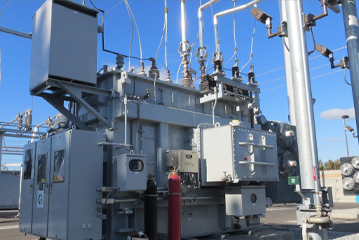Mid Cable Partial Discharge: Why you don’t want it
December 9, 2022
Analysing the condition of over 2000 cables in recent years has resulted in an accumulation of data from which compelling trends can be extracted. One such tendency relates to the location of Partial Discharge (PD) on a cable. In over 99% of cases PD detected on a cable emerges from a joint or termination as opposed to on the cable itself, that is, “mid Cable.” While not common, we have witnessed the development of PD mid cable and the repercussions are significant.
In cases where mid-cable PD has occurred there has been a rapid onset of failure following initial detection. Whereas joint PD on an XLPE cable can reach levels over 3000 pC and trended for several years prior to failure, mid-cable PD can cause insultation flashover at just a few hundred pC.
Further investigation into cases involving mid-cable PD has attributed the discharge to water damaged XLPE, a damaged section of cable or a tight bending radius where the cable is laid. Water trees in cables will not produce PD until they turn to electrical trees, once this occurs cable failure is rapid.
Mid-cable PD is generally not apparent when using online analysis techniques. The reason being that if the cable has PD unrelated to a joint or termination at service voltage in all probability there would have already been a cable failure. With such a short time frame between PD inception and failure, the likelihood of performing an online test, which detects discharge mid cable in this window of opportunity, is unlikely.
This highlights the importance of monitoring levels and pinpointing PD location during high voltage testing of cables. If performing withstand (AC of VLF) or Tan Delta measurements it is imperative that PD levels and locations are monitored simultaneously.
When presented with mid-cable PD, it is recommended that testing cease immediately, and a repair/replacement is scheduled as soon as practical to avoid a critical failure.
Mid-cable PD is rare, and mostly seen on older cables or poor installations, however, it does occur and its acute nature results in rapid failure.


